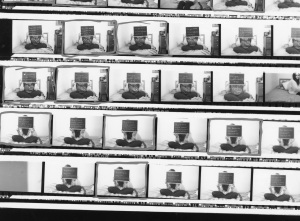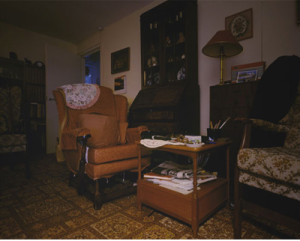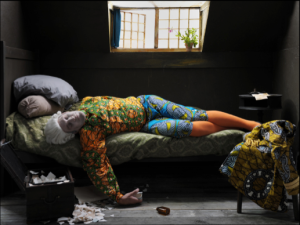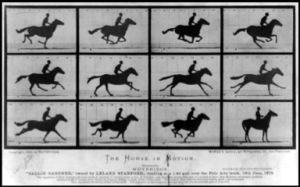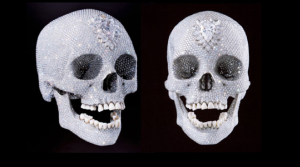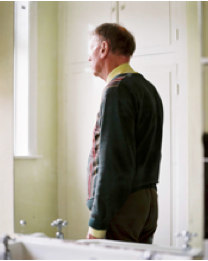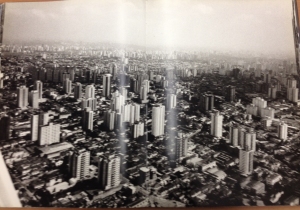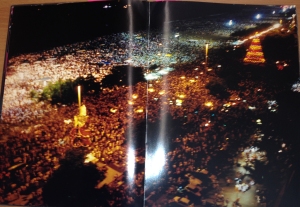At the beginning of the lecture we looked into what everyone thought the definition of Fine Art. The actual definition of Fine art is : “The use of skill and imagination in the creation of aesthetic objects, environments, or experiences that can be shared with others” I think fine art is a very broad subject and for me its the idea of being creative and making your own piece of work unique to others and impressing those who view it.
We then started to talk about Aboriginal Art and how they’re art was meant for others to see, so that the tribe that painted the cave paintings could tell there stories to others. In many ways this isn’t much different to what we do now except of the revolution in the way we portray our work. The whole idea of a gallery is to show our work off to others. The art work or photography might not be telling a story like the aboriginals were but we still want to show our work to others.
We looked at an image of the Virgin Mary, and how they artist painted religious symbols into the painting. i.e. the cross in the middle of the image, the Halos above the women’s heads makes them seem saint like .
 Dante Gabriel Rosse/The Girlhood of Mary Virgin
Dante Gabriel Rosse/The Girlhood of Mary Virgin
Next we looked at another image of the Virgin Mary from the point of view of Chris Ofili. His image of the Virgin Mary was very controversial as he used elephant dung in his image. This was strongly disliked by many religious people/ groups that felt it was offence. However without the use of the elephant dung in the image I don’t think it would have become so famous.

We then looked at an image by Yinka Shonibare- Fake death picture (the death of Chatterton- Henry Wallis)
The Original ( bottom image) was painted by Henry Wallis called The Death of Henry Chatterton in 1856 titled Without Art I Am Nothing. The poet in the image had killed himself because of his poetry. Yinka Shonibare has put his own twist to the image by adding African culture.
We then looked at Tom Hunter’s image “The way home”.
He finds his inspiration from stories in the local newspapers and the news and recreates what has happened through his photographs. An example of this is the image we studied in the lecture of a young women floating in a small river. Hunter got the inspiration for this image from a news stories of a young girl that had fallen in a river and drowned on her way home one night.
 The Way Home- Tom Hunter.
The Way Home- Tom Hunter.I personally think this could be seen as wrong in a way especially for the families of the person that has passed away. Its not that the images are specifically frightening or gory but quite shocking because we know that this must have happened to a real person.
The Influence of Photography.
The beginning of photography influence art quite a lot especially when it came to art work that moves. In the lecture we looked at the photograph by Eadweard Muybridge called MoVon Studies 1877 Gericault. Its a series of images taken as a race horse ran along a track. Muybridge set up several cameras along the race track and set them off one after another to capture the horse running, because of his photographs they learnt that horses feet don’t leave the ground all at once but one after the other.
We then looked into Modern Art.
Firstly we saw Marcel Duchamp’s image of the urinal that he entered into an art competition and surprisingly won despite just writing his signature on the urinal. He made a statement about what is art? His photographs seem to be taking the mick with his images. The photos is titled “Arts for Arts Sake”, this lead us into talking when does something actually become art? Will we ever know? I think what is art depends on the person viewing it. What one person views as art an another might disagree.
This lead on to the conversation of artists such as Tracey Emin and Damien Hurst’s work and whether they have gone too far and if their work is in fact art work? Tracey Emin puts her life into her artwork. It can shock people but it also can fascinate people as well.
One piece of work we studied was Damien Hurst’s crystal skull. As he didn’t actually make the product himself but instead he got a company to get a skull he’d bought in diamonds and crystals.
Another thing we looked into was artists that steal other peoples work or advertising photographs and use it as their own. The image by Richard Prince of the untitled Cowboy was a photograph stolen from a Marlbro cigarette advertising.
 This is my contact sheet using Medium Format Film in the Mamiya 7. The camera was a bit difficult at first but after a few blurry photos I got some clear black and white shots. I then developed the film in the machine and used the enlarger in the dark room to create my contact sheet.
This is my contact sheet using Medium Format Film in the Mamiya 7. The camera was a bit difficult at first but after a few blurry photos I got some clear black and white shots. I then developed the film in the machine and used the enlarger in the dark room to create my contact sheet.




